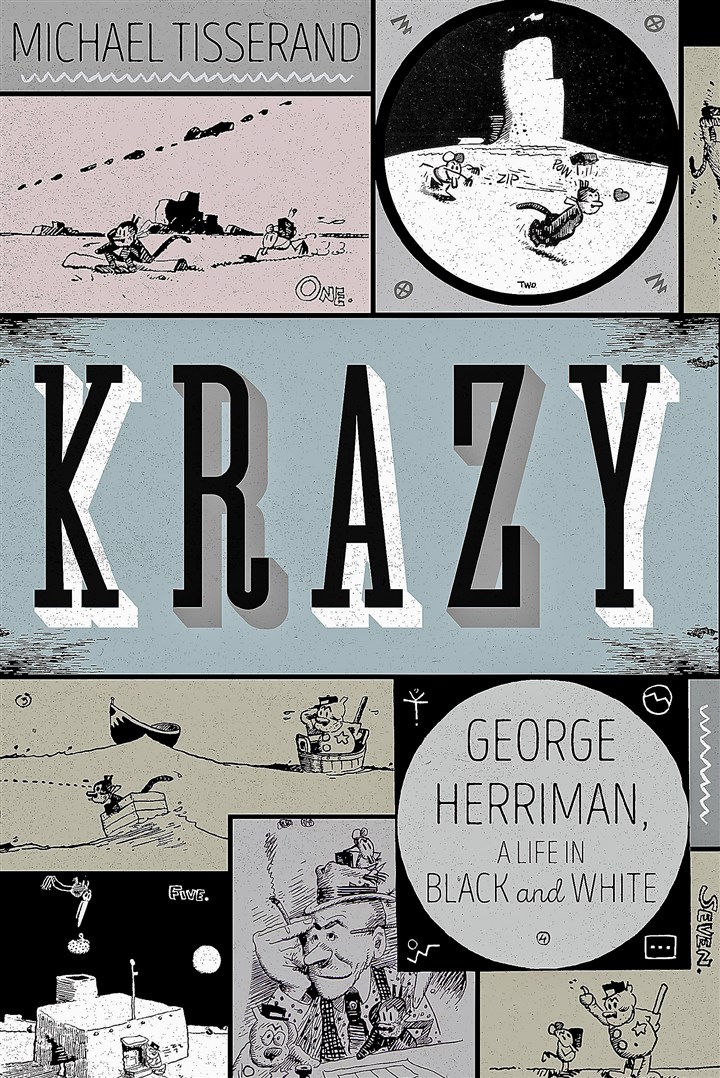‘Krazy: George Herriman, a Life in Black and White’: A life as unorthodox as his comic stripPosted in Articles, Biography, Book/Video Reviews, History, Louisiana, Media Archive, Passing, United States on 2017-03-12 02:21Z by Steven |
‘Krazy: George Herriman, a Life in Black and White’: A life as unorthodox as his comic strip
Pittsburgh Post-Gazette
2017-02-19
 “Krazy: George Herriman, A Life in Black and White” by Michael Tisserand. |
Ignatz Mouse: “Hey, this isn’t black coffee!!!”
Krazy Kat: “Sure it is. Look unda the milk.”
“Krazy Kat,” created by George Herriman, is one of the most influential comic strips of all time. Centered around the iconic love triangle of Krazy, Ignatz Mouse and Offisa Pupp, the feature ran as a syndicated newspaper strip from 1913 to 1944. To a modern audience the strip can be difficult to understand, if not impenetrable. The pacing and sense of humor of 100 years ago feel foreign to current trends. There are references that were common at the time that are lost to us now. The language used is an idiosyncratic patois of nonsense poetry.
The backgrounds, while beautifully rendered, are a constantly changing surreal backdrop. Characters frequently broke the fourth wall, commenting directly on their status as cartoons. The title character, Krazy Kat, was of indeterminate gender, referred to with shifting pronouns, sometimes within the same sentence. As a whole, Krazy Kat was an ongoing challenge to the reader’s perception of definitions and boundaries.
Creator George Herriman was born in New Orleans in 1880. In the latter part of the 19th century his family moved to Los Angeles where his father worked as a tailor and George began his art career, eventually becoming one of the most famous and celebrated cartoonists in history. This is a distinction that would not have been possible if the truth of his life had been known at the time.
In 1971, while researching Mr. Herriman for an entry in the Dictionary of American Biography, professor Arthur Berger discovered a previously unknown fact. On his birth certificate Mr. Herriman was listed as “colored.” It had always been assumed that he was a white man. Mr. Herriman, to use the terminology of the time, “passed for white” his entire life, at a time when his color would have prevented him from many, if not all, of the achievements he is known for…
Read the entire article here.






